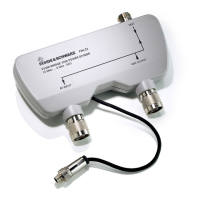Remote control commandsMXO 4 Series
472User Manual 1335.5337.02 ─ 07
17 Remote control commands
This chapter describes all remote commands available for MXO 4 and provides exam-
ples and information how to use the commands.
For general information on remote control of Rohde & Schwarz products via SCPI,
refer to www.rohde-schwarz.com/rc-via-scpi.
See also Chapter 16.4, "Remote control", on page 459 and Chapter 16.5, "Remote
control - status reporting system", on page 462 for further information on remote con-
trol.
The description of the remote commands, assume a MXO 4 with the highest available
bandwidth. Depending on your model, some of the available command ranges can dif-
fer from the values stated in the following chapters.
17.1 Conventions used in remote command description
The basics of SCPI command structure, syntax and command parameters are
explained in www.rohde-schwarz.com/rc-via-scpi.
The following conventions are used in the remote command descriptions:
●
Command usage
If not specified otherwise, commands can be used both for setting and for querying
parameters.
If a command can be used for setting or querying only, or if it initiates an event, the
usage is stated explicitly.
●
Parameter usage
If not specified otherwise, a parameter can be used to set a value, and it is the
result of a query.
Parameters required only for setting are indicated as Setting parameters.
Parameters required only to refine a query are indicated as Query parameters.
Parameters that are only returned as the result of a query are indicated as Return
values.
●
Conformity
Commands that are taken from the SCPI standard are indicated as SCPI con-
firmed. All commands used by the MXO 4 follow the SCPI syntax rules.
●
Asynchronous commands
A command which does not automatically finish executing before the next com-
mand starts executing (overlapping command) is indicated as an Asynchronous
command.
●
Reset values (*RST)
Default parameter values that are used directly after resetting the instrument (*RST
command) are indicated as *RST values, if available.
●
Default unit
Conventions used in remote command description

